Ever wonder what makes the wind blow? It’s one of those things that’s always around us. You can feel it and see its impact, but for kids, wind can feel a little vague. That’s why I pulled together a fun list of 25+ Learn About Wind Activities and some of the science that will make that happen.
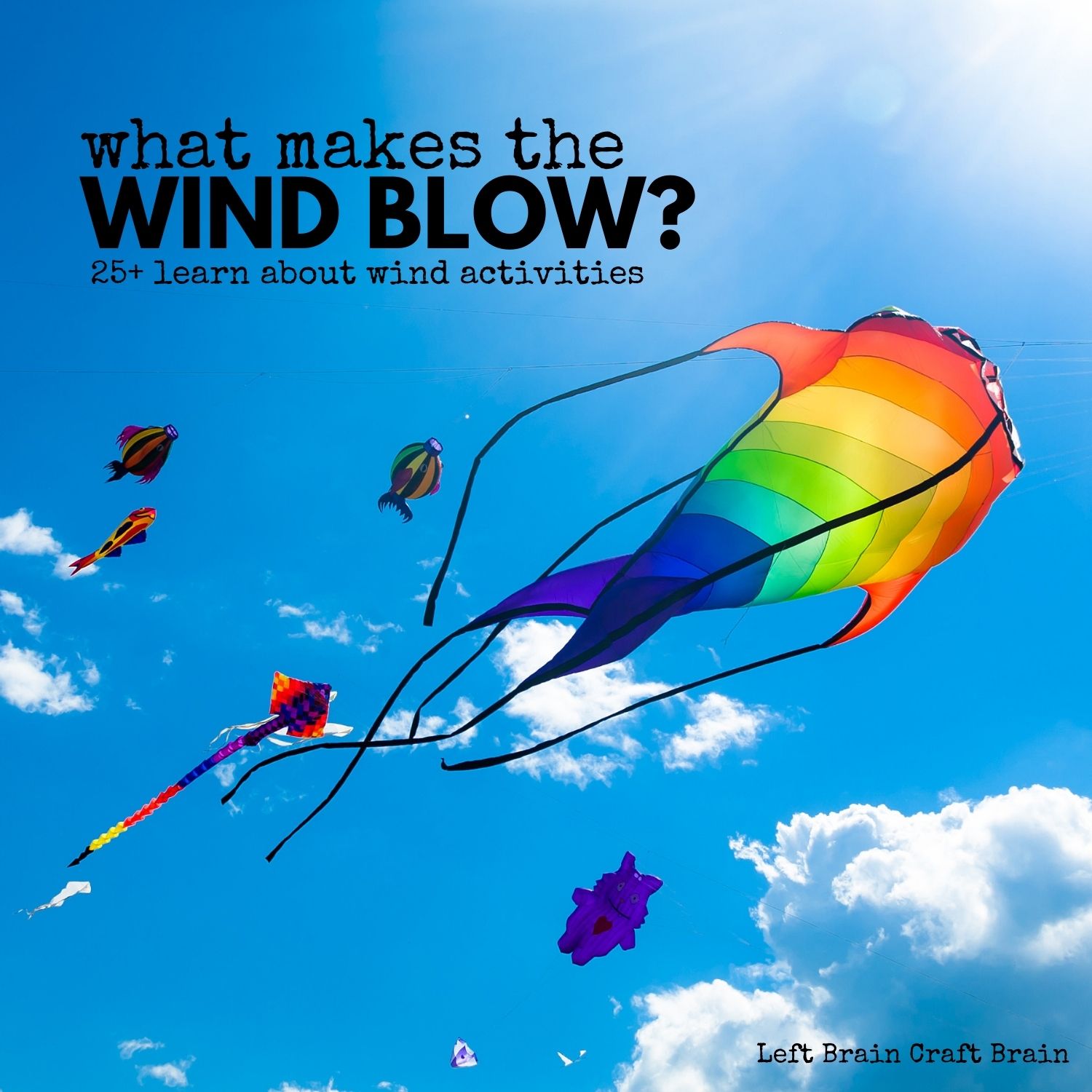
Please note, I have provided links for supplies as they are hard to find in stores and as an Amazon Associate I earn from qualifying purchases. This is at no cost to you.
What is Wind?
Let’s start with the basics… It’s all around us and moves nice neat piles of freshly raked leaves back around the yard 🤣 But why? Wind is the horizontal movement of air flowing from areas of higher pressure to lower pressure. The greater the difference in pressure, the higher the wind speed.
We took a family outing to the Berkeley Kite Festival and were completely inspired to learn about wind. Check out this video of the gorgeous octopus kites from the festival.
Why Does the Wind Blow?
So what causes these pressure differentials? It’s all about temperature. The sun heats up the earth, which heats up the air over it. The hotter air is less dense and begins to rise, leaving a low-pressure void over the earth. But the temperature doesn’t rise as high over areas like oceans that can absorb more of the sun’s heat. This creates the opposite situation, i.e. high atmospheric pressure over the oceans. So the air flows from high pressure over the ocean to the lower pressure areas over land. A similar process occurs on a larger scale with temperature differentials between the earth’s poles and the equator.
What Makes the Wind Blow in a Particular Direction?
Three different forces influence the direction the wind blows. The first is the Pressure Gradient Force which causes the air to move from an area of high pressure to low pressure. The second is the Coriolis Force created by the earth’s rotation on its axis. This causes things in the Northern Hemisphere to turn to the right and things to turn to the left in the Southern Hemisphere. The third force is Friction because the Earth is rough and mountains and valleys can alter the wind flow. The sum of these forces determines the direction.
Wind Vocabulary
Did you know that those words you use to describe wind like breeze and gale have been defined by a scientist named Francis Beaufort? He created a scale that classifies winds by their speed. Wind is measured in knots, a measure of distance/time and can also be shown as miles per hour or kilometers per hour. Here are a few of the Beaufort Scale classifications:
- Calm (< 1 mph)
- Light Breeze (4-7 mph)
- Fresh Breeze (18-24 mph)
- High Wind (31-38 mph)
- Gale (39-46 mph)
- Storm (55-63 mph)
- Hurricane (≥ 74 mph)
Now that we’re all wind smart, it’s time to play!
Wind Science and Engineering
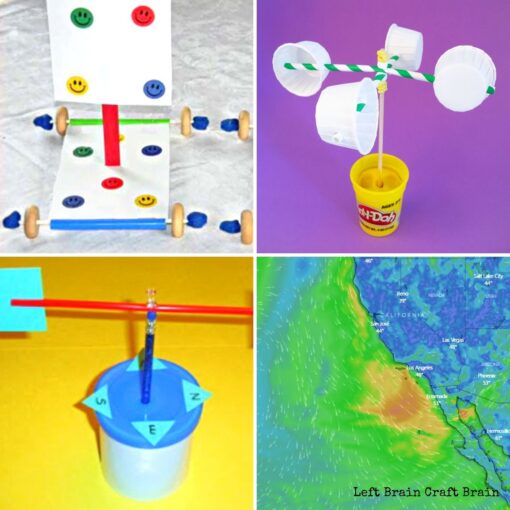
- Make an Anemometer (wind speed meter) with this easy tutorial from Left Brain Craft Brain.
- Check the Weather. For the older crowd, the free Windy app lets you see the details of the wind around you like speed, direction, and historical patterns. It’ll help you pick the best location to fly a kite, too.
- Wind Vane from Learning Ideas
- DIY Wind Car from Stir the Wonder
- Make a LEGO Turbine with parts from the Lego Education Tech Machines Set
{affiliate}.
- Visit a Science Museum. Almost every science museum we’ve been to has a hands-on wind activity. To find a museum near you or your next vacation, check out the Association of Science-Technology Centers Passport Program of global museums.
- Build a Miniature Turbine from Popular Mechanics.
Wind Arts and Crafts

- Rainbow Wind Sock from Kids Craft Room
- Blow Painting from Artful Parent
- Spring Garden Washer Wind Chime from One Time Through
- Cutlery Wind Chimes from Red Ted Art
- Paint a Rainbow Fan by Pink Stripey Socks
- Pinwheel Pencil Valentines from MomDot
- Milk Carton Windmill from Artists Helping Children
- Natural Wind Catcher from Inspiration Laboratories
- Farm Animal Wind Socks from Buggy and Buddy
Kite Fun
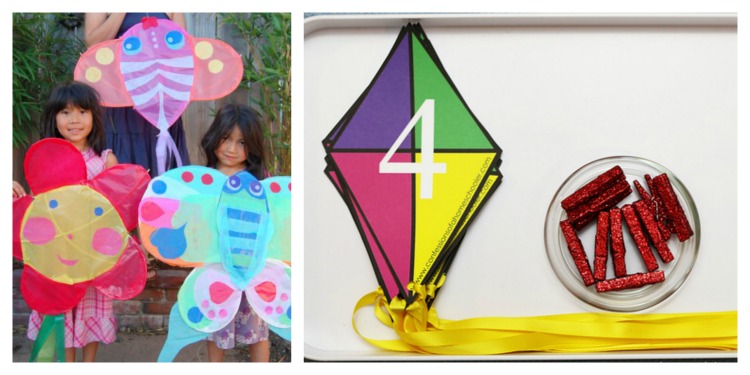
- Make a Beautiful Kite by The Journals of Giddy Giddy and featured on Red Ted Art
- Montessori-Inspired Kite Activities Using Free Printables by Living Montessori Now and featured on Pre-K + K Sharing
- Flying a Kite: Hands-on Science from KC Edventures
- Go to a Kite Festival or Competition like we did. The American Kiteflyers Association has a great calendar of kite events around the country.
Wind Motor Skills Activities
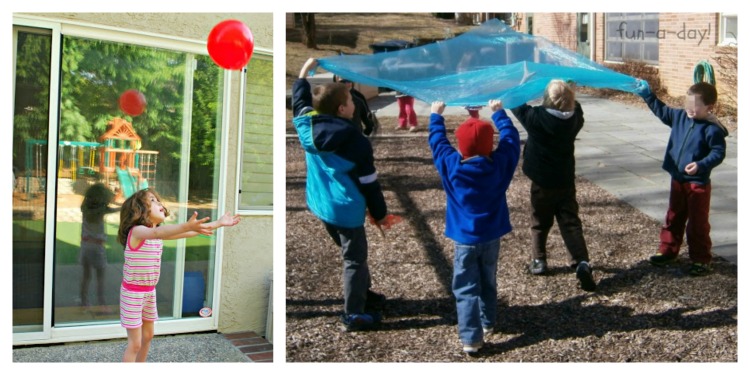
- Learn Through Movement – Balloon Experiments from Mess for Less
- Using Scarves to Explore the Wind by Fun-A-Day via B-Inspired Mama
- Fly a kite. I love this slightly smaller version of the octopus kite
we saw at the Berkeley festival
Read About Wind
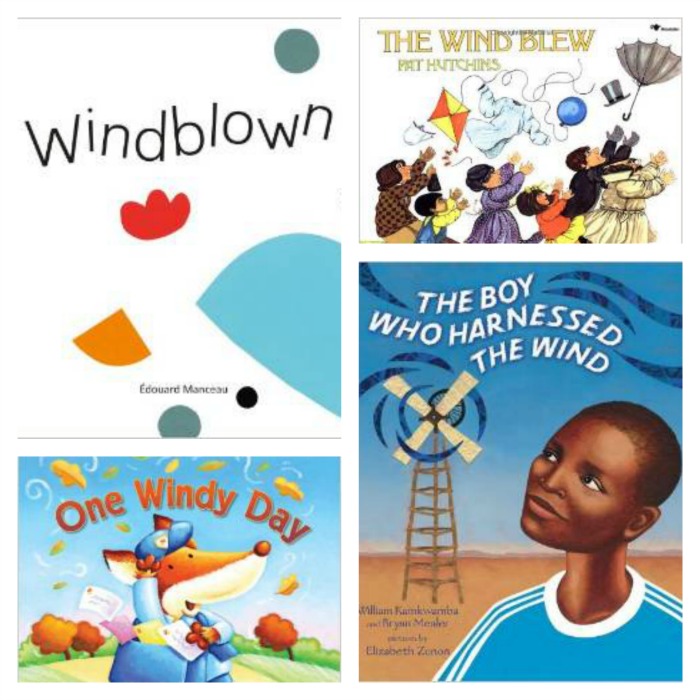
- One Windy Day by Tammi Salzano
{affiliate} tells a silly story about a foxy mail carrier whose mail blows away.
- The Boy Who Harnassed the Wind by William Kamkwamba and Bryan Mealer
is an inspiring tale of an inventive boy from Malawi who uses wind to bring electricity to his village.
- Figure out which nose belongs to who in Windblown by Edouard Manceau
by Edouard Manceau. Childhood 101 has a great craft to go along with the book.
- The Wind Blew by Pat Hutchins
tells the fun story of how the wind blew so hard it blew everything away.
- The most important reading about wind you can do is information on winds that come with weather events like tornadoes and hurricanes. Ready.gov has some great information to help you and your family be prepared.
More Fun with the World Around Us!
Try one of these fun, hands-on activities to learn more about the world around us.
6 Amazing Ways to Make Weather in a Jar
Solar-Powered Paper House Project
Or want a planned-for-you activity pack ready for some weather fun? Try the STEAM Explorers Weather Ebook!
Kids will love creating weather in a jar, capturing the daily forecast in an art journal, and becoming a meteorologist with DIY tools. You'll love the helpful standards-based learning, printables, and tools that make STEAM exploration easy!

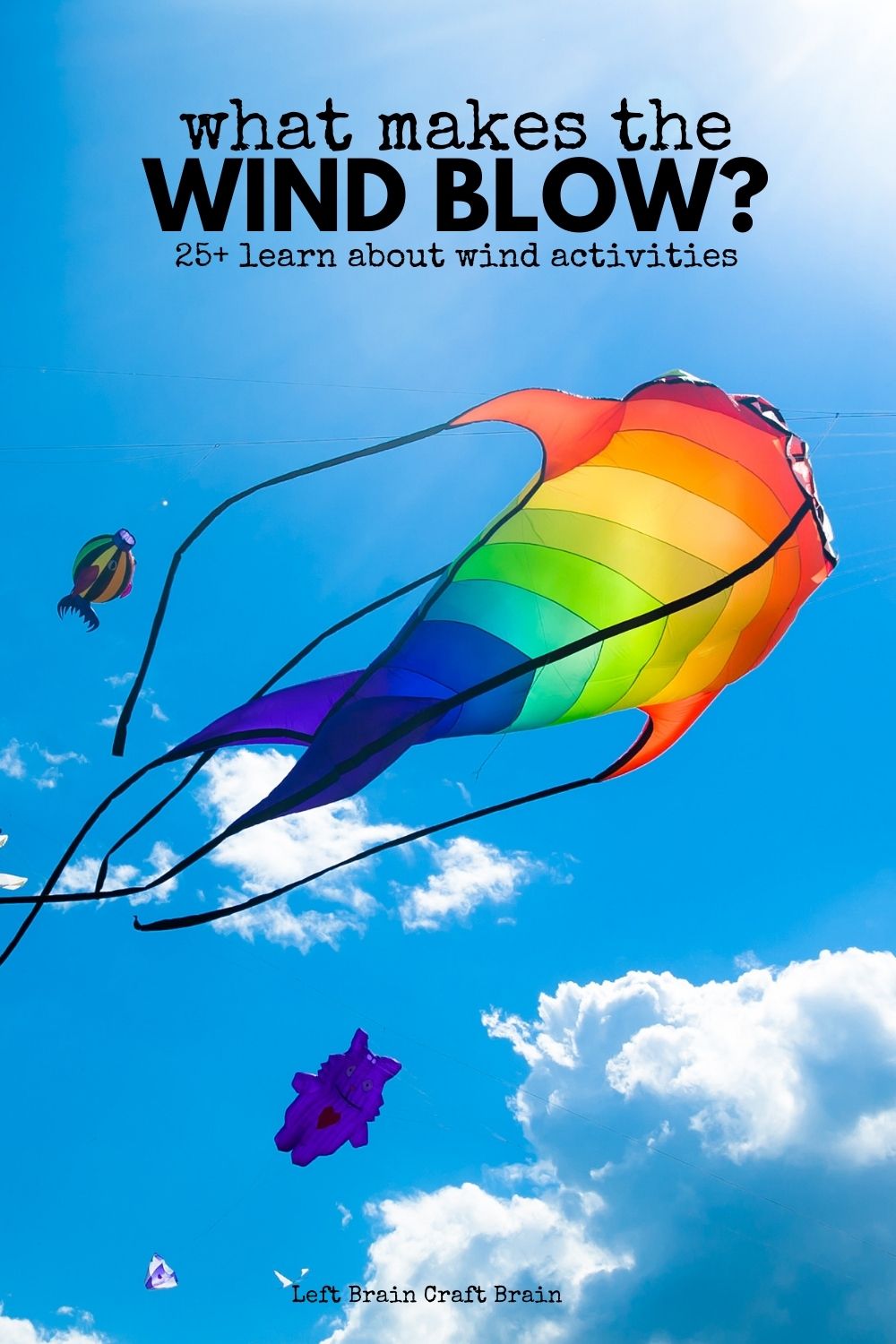
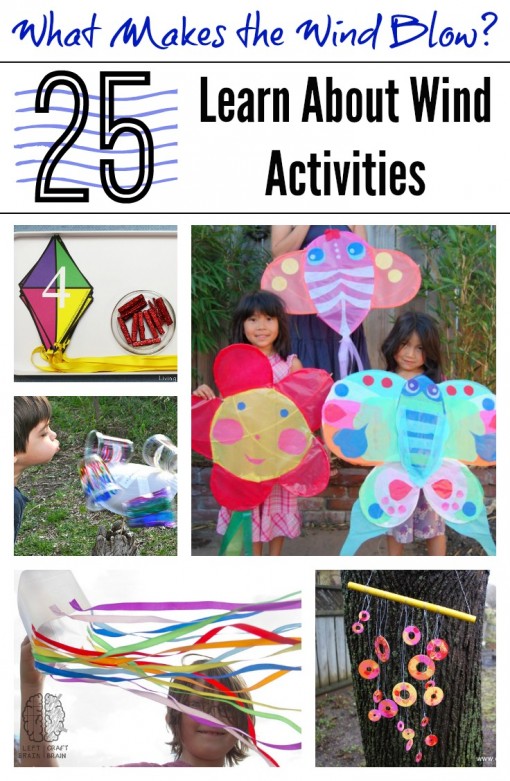

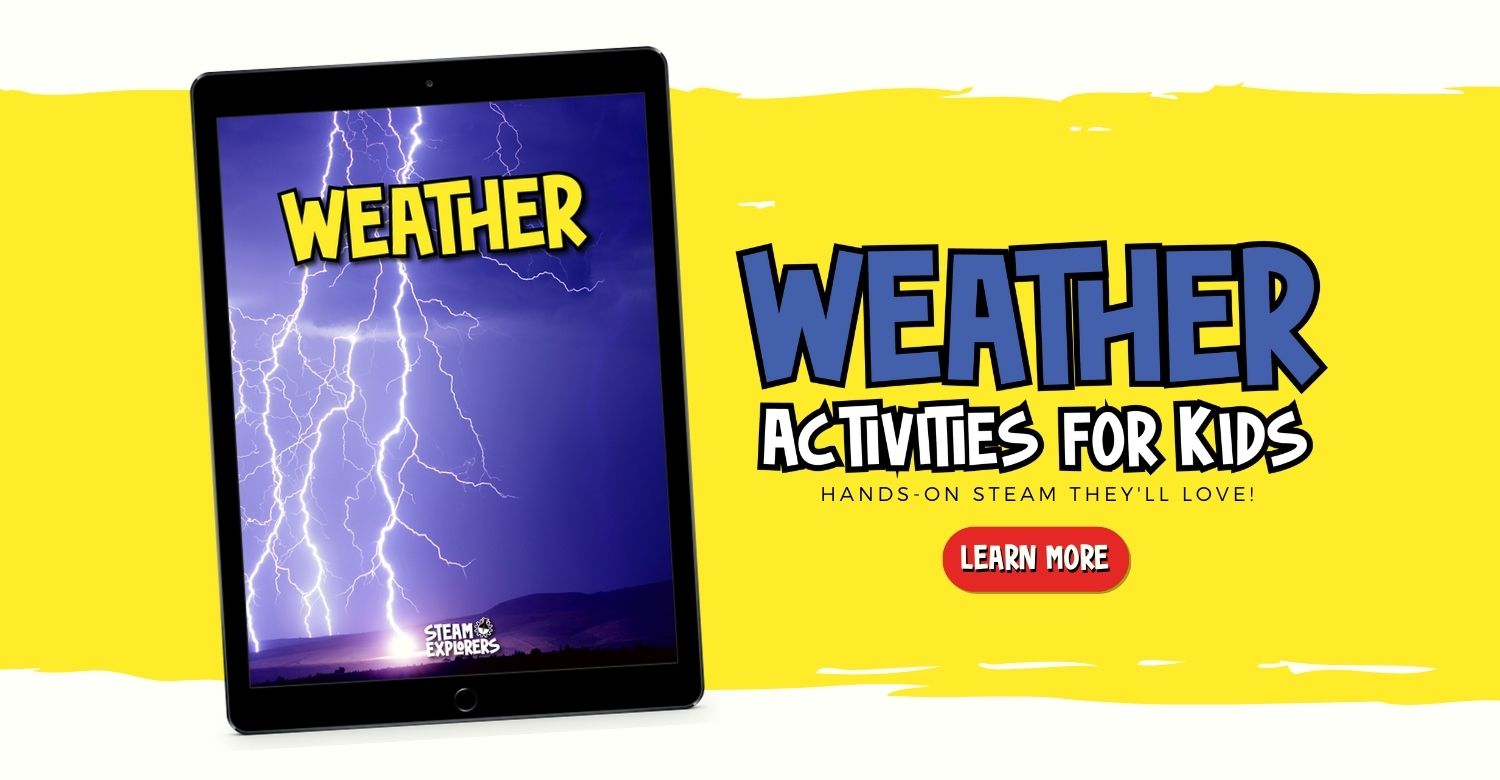
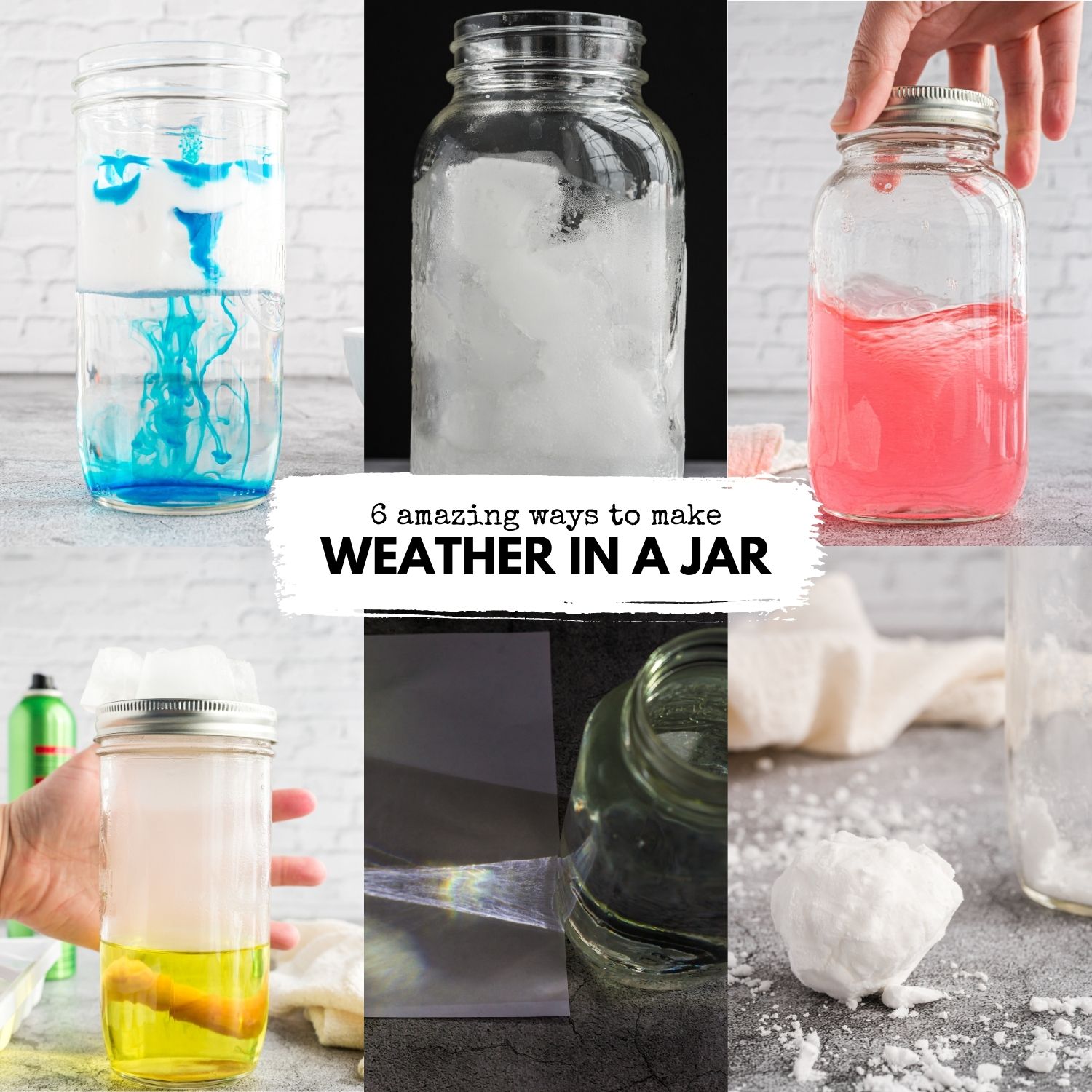
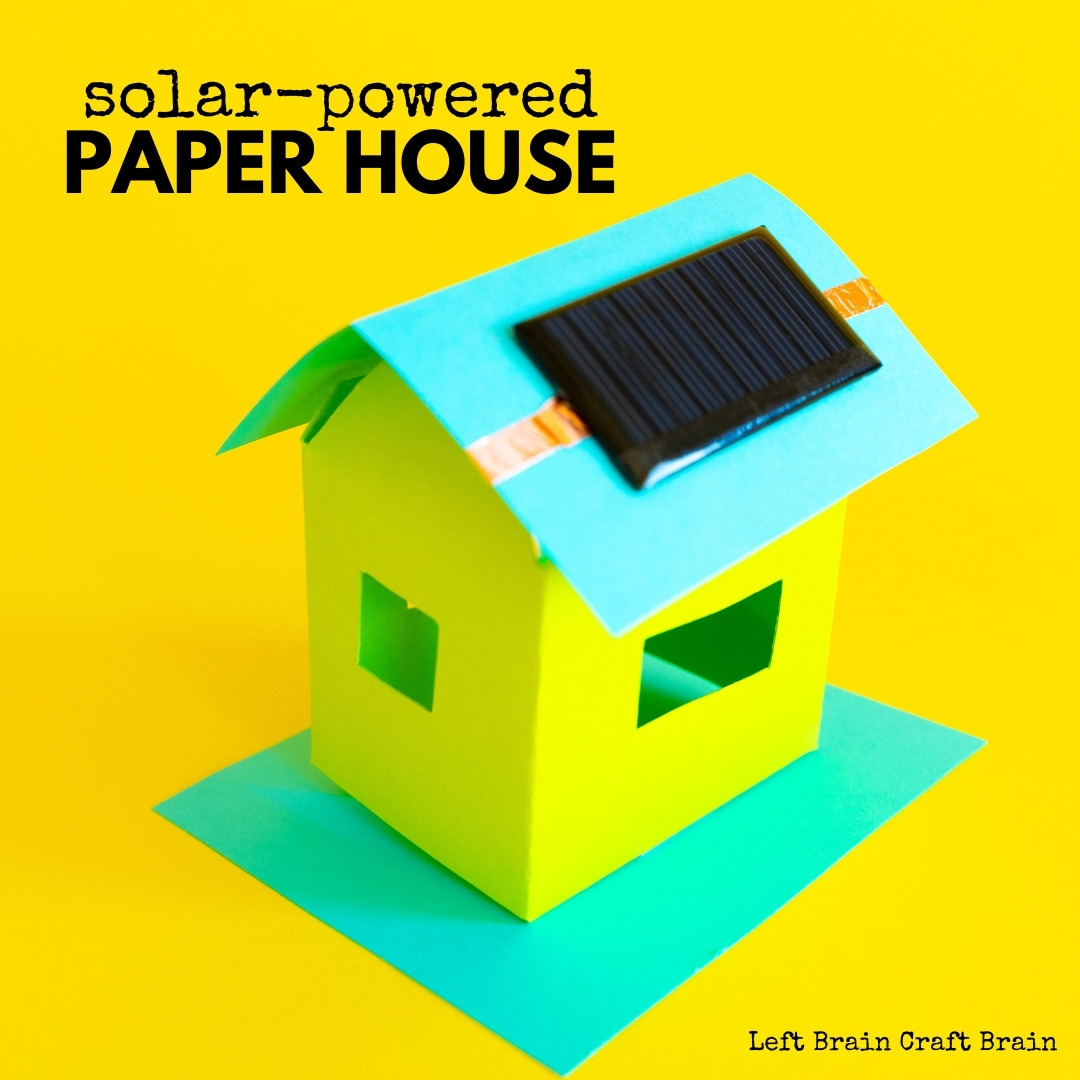
Wow – what an amazing collection of ideas! Thanks for sharing our garden washer windchimes too!
Thanks Sue! I love those wind chimes.
Wow! So many great ideas! I love the science experiments and all of those fun kite activities :) Flying kites is one of my 3 year old’s favorite things to do outside.
Thanks Amber! We just went out and flew kites again today. My 3 1/2 year old can’t get enough of it!
Pingback: Fun outdoor activities for kids
What a fun post!
Thanks Amanda!
So many great activities! Off to pin!
Thanks so much! Glad you like it :)
Love the post! :)
Thanks Katie!
Thank-you so much for sharing my craft!
Trisha
Momdot
My pleasure! Loved it.
Pingback: Top Post of 2014 - Left Brain Craft Brain
Pingback: 10 Early Learning Activities to do Outdoors
Pingback: 7 Fun Beach Science Activities for Kids - Left Brain Craft Brain
Pingback: 20 Weather STEM Actvities - The Homeschool Scientist
Pingback: 20 Weather STEM Activities -